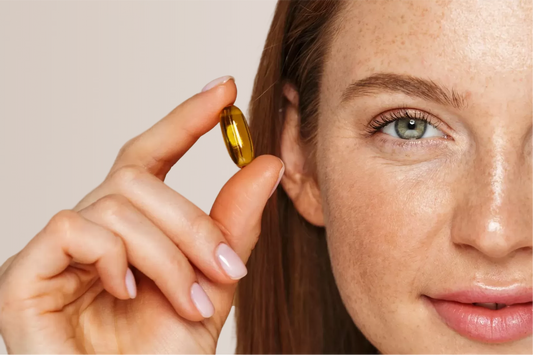Discovering the Number 1 Cause of Headaches: Insights and Solutions
What's the best way to treat a headache, and what are the most effective treatment options? In this article, we'll explore the number 1 cause of headaches, symptoms, and treatment options for headaches, as well as provide tips for managing and preventing them.
What is a headache?
A headache is a common and often debilitating condition characterized by pain or discomfort in the head or face. It is one of the most prevalent health issues worldwide, affecting millions of people. Headaches can be acute or chronic, and their severity can range from mild to severe
What are the types of Headaches?
There are several types of headaches, which can be categorized into primary and secondary headaches. Primary headaches are not caused by an underlying medical condition, while secondary headaches are triggered by another condition or injury. Here are some common types of headaches:
Primary Headaches
-
Tension Headaches: Characterized by a dull, aching sensation all over the head, often triggered by stress and muscle tension.
-
Migraine Headaches: Typically involve intense throbbing pain on one side of the head, accompanied by sensitivity to light, sound, and smell, and often triggered by hormonal changes, stress, and certain foods.
-
Cluster Headaches: Severe and recurrent headaches that can last from 15 minutes to 3 hours, often accompanied by watering eyes, swollen eyelid, and sensitivity to light and sound.
-
Hemicrania Continua: A rare and chronic headache condition characterized by constant pain on one side of the head.
-
Ice Pick Headaches: Primary stabbing headaches that can occur suddenly and last for a few seconds.
-
Thunderclap Headaches: Sudden and severe headaches that can be a sign of a serious underlying condition such as a stroke or meningitis.
- Hypnic Headaches: Headaches that occur during sleep, often described as a sharp, stabbing pain.
Secondary Headaches
-
Sinus Headaches: Caused by sinus infections or allergies, often accompanied by facial pain and pressure.
-
Allergy or Sinus Headaches: Triggered by allergies or sinus infections, often accompanied by nasal congestion and facial pain.
-
Hormone Headaches: Headaches caused by hormonal changes, such as those experienced during menstruation or menopause.
-
Caffeine Headaches: Headaches caused by caffeine withdrawal or overconsumption.
For more information on the connection between caffeine and headaches, check out our blog post on "Coffee and the Nervous System".
-
Exertion Headaches: Headaches caused by physical activity or exercise.
-
Hypertension Headaches: Headaches caused by high blood pressure.
-
Rebound Headaches: Headaches caused by overuse of pain medications.
-
Post-Traumatic Headaches: Headaches caused by head injuries or trauma.
- Spinal Headaches: Headaches caused by low cerebrospinal fluid pressure following a lumbar puncture.
Rare Headaches
-
Chronic Daily Headaches: Headaches that occur more than 15 days per month.
- New Daily Persistent Headaches: Headaches that start suddenly and persist daily.
Number 1 cause of headaches?
The number one cause of headaches is stress. Stress can cause tight muscles in the shoulders and neck, which often leads to tension headaches, stress can also trigger migraines and other types of headaches.
When to Seek Medical Attention?
You should seek medical help if you experience any of the following symptoms alongside your headache:
-
Sudden, severe headache: If your headache comes on suddenly and becomes severe, it could be a sign of a serious underlying condition.
-
Worst headache ever: If you experience the worst headache you've ever had, it may indicate a life-threatening condition.
-
Stiff neck and fever: If your headache is accompanied by a stiff neck and fever, it could be a sign of meningitis or another serious infection.
-
Seizures, confusion, or personality changes: If you experience seizures, confusion, or personality changes along with your headache, it may indicate a serious medical condition.
-
Vision changes or numbness: If your headache is accompanied by vision changes, numbness, or weakness, it could be a sign of a stroke or other serious condition.
-
Head injury or accident: If your headache starts after a head injury or accident, it is essential to seek immediate medical attention.
- New type of headache after age 50: If you experience a new type of headache after age 50, it could be a sign of an underlying medical condition that requires attention.
How to Identify Your Headache
To identify your headache, keep a headache journal to document each headache, including:
-
Duration: How long the headache lasts.
- Intensity: How severe the headache is
- Location: Where the headache occurs
- Possible triggers: Any factors that might have caused the headache
This information will help you and your healthcare provider better understand your headache and develop an appropriate treatment plan.
How to Manage and Treat Headaches
Managing and treating headaches involves a combination of medication, lifestyle changes, and complementary therapies. Here are some steps you can take:
-
Consult a Doctor: If you experience frequent or severe headaches, consult a doctor to determine the underlying cause and develop a treatment plan.
-
Medication: Over-the-counter pain relievers like paracetamol or ibuprofen can be used safely for episodic headaches. Prescription medications like triptans, CGRPs, and Botox are also effective for migraines.
-
Lifestyle Changes: Identify and avoid triggers such as stress, lack of sleep, and certain foods. Maintain a consistent sleep schedule, exercise regularly, and practice relaxation techniques like meditation.
-
Complementary Therapies: Massage, acupuncture, and meditation can help alleviate headache pain. Keep a headache diary to track patterns and triggers.
-
Preventive Measures: For chronic headaches, preventive medications and lifestyle changes are recommended. This includes managing stress, improving sleep, and increasing physical activity.
-
Acute Treatment: For acute headaches, medications like analgesics, nonsteroidal anti-inflammatory drugs, and triptans can be effective.
-
Specialized Treatment: For specific types of headaches like migraines, cluster headaches, and tension-type headaches, specialized treatments like nerve stimulation devices and botox injections may be necessary.
- Ongoing Care: Managing headaches often requires ongoing care and adjustments to treatment plans. Work closely with your doctor to find the best treatment for your specific needs.
Can You Prevent Headaches?
Yes, headaches can be prevented by managing triggers, maintaining a healthy lifestyle, and using natural supplements. Here are some tips to help you prevent headaches:
-
Maintain a Regular Sleep Schedule: Establish a consistent sleep schedule to regulate your body and reduce headache frequency.
-
Watch What You Eat and Drink: Avoid skipping or delaying meals, and drink plenty of water. Also, avoid foods that can trigger headaches, such as caffeine, monosodium glutamate (MSG), aged cheese, sausage, red wine, and other alcoholic beverages.
-
Control Stress: Learn techniques to help you relax and reduce emotional stress, such as deep breathing, visualization, progressive relaxation, and biofeedback.
-
Exercise Regularly: Engage in low-impact aerobic exercise, such as walking, to strengthen your muscles and reduce tension.
-
Practice Good Body Mechanics: Learn proper lifting and carrying techniques to prevent back and neck strain, and set up your workspace to promote good posture.
-
Avoid Odors and Fumes: Switch to unscented household products and avoid strong smells that can trigger headaches.
-
Consider Alternative Therapies and Supplements: Certain supplements like magnesium glycinate and coenzyme Q10 have been shown to help prevent headaches.
-
Practice Meditation and Deep Breathing: Regular meditation and deep breathing can help reduce stress and alleviate headache pain.
-
Balance Your Time: Ensure a healthy work-life balance and avoid overexertion.
-
Stay Hydrated: Drink enough water throughout the day to avoid dehydration headaches.
For more information on the importance of hydration for brain health, check out our blog post on "Drink for Brain Health".
By following these tips, you can reduce the frequency and severity of headaches and maintain a healthier lifestyle. Visit our collection at BHealth Shop to discover more about our products and how they can help you manage headaches naturally.
What Happens After I Start Treatment?
After starting treatment for headaches, you can expect the following:
-
Initial Relief: You may experience immediate relief from headache pain after taking abortive medications such as triptans, ergots, or analgesics.
-
Preventive Therapy: If you have frequent headaches, your doctor may recommend preventive medications to reduce the frequency and severity of attacks.
-
Monitoring and Adjustments: Your doctor will monitor your response to treatment and adjust medications as needed to achieve optimal results.
-
Lifestyle Changes: You may be advised to make lifestyle changes such as maintaining a consistent sleep schedule, exercising regularly, and avoiding triggers like certain foods or stress.
-
Follow-up Appointments: Regular follow-up appointments with your doctor will help track your progress and make any necessary adjustments to your treatment plan.
-
Potential Side Effects: You may experience side effects from medications, such as nausea, dizziness, or fatigue. These side effects are usually temporary and can be managed with adjustments to your treatment plan.
- Long-term Management: For chronic headaches, long-term management involves ongoing treatment and lifestyle changes to manage symptoms and prevent future attacks.
It is essential to work closely with your healthcare provider to develop a personalized treatment plan that addresses your specific needs and helps you manage your headaches effectively.
How to avoid headaches?
-
Maintain a Regular Sleep Schedule: Establish a consistent sleep schedule to regulate your body and reduce headache frequency.
-
Watch What You Eat and Drink: Avoid skipping or delaying meals, and drink plenty of water. Also, avoid foods that can trigger headaches, such as caffeine, monosodium glutamate (MSG), aged cheese, sausage, red wine, and other alcoholic beverages.
-
Control Stress: Learn techniques to help you relax and reduce emotional stress, such as deep breathing, visualization, progressive relaxation, and biofeedback.
-
Exercise Regularly: Engage in low-impact aerobic exercise, such as walking, to strengthen your muscles and reduce tension.
-
Practice Good Body Mechanics: Learn proper lifting and carrying techniques to prevent back and neck strain, and set up your workspace to promote good posture.
-
Avoid Odors and Fumes: Switch to unscented household products and avoid strong smells that can trigger headaches.
-
Keep Up Your Energy: Eat on a regular schedule, and don’t let yourself get dehydrated.
- Manage Hormones: For women, managing hormonal fluctuations through birth control pills or hormone replacement therapy can help alleviate migraines.
What foods trigger headaches?
-
Alcohol: Red wine, champagne, and other fermented liquors contain histamine and tyramine, which can trigger headaches.
-
Tyramine: Found in aged cheese, smoked fish, chicken livers, figs, and some beans, tyramine can cause headaches.
-
Nitrates: Cured meats like hot dogs, bacon, ham, salami, sausage, and bologna can trigger headaches.
-
Monosodium Glutamate (MSG): This flavor enhancer is found in soy sauce, packaged noodles, meat tenderizers, and processed meats and can cause headaches.
-
Caffeine: Excessive coffee consumption can trigger headaches, especially in those who are sensitive to caffeine.
-
Phenylalanine: Containing foods and beverages like nuts, seeds, some fruits, and dairy products can cause headaches.
-
Chocolate: Chocolate contains caffeine and other compounds that can trigger headaches.
-
Citrus Fruits: Some people may experience headaches after consuming citrus fruits like oranges, grapefruits, and lemons.
-
Beans: Certain types of beans like lima, fava, navy, pinto, garbanzo, lentils, and snow peas contain tyramine and can trigger headaches.
-
Dried Fruits: Dried fruits like dates, figs, and raisins can cause headaches due to their high sugar content.
-
Garlic: Garlic can trigger headaches in some individuals.
-
Onions: Onions can cause headaches due to their sulfur content.
-
Pickled Foods: Foods like pickles, pickled herring, and olives can trigger headaches due to their high sodium content.
-
Potato Chips: Potato chips can cause headaches due to their high sodium and fat content.
- Smoked or Dried Fish: Smoked or dried fish can trigger headaches due to their high mercury content.
Conclusion
FAQ
Q: What are the most common types of headaches?
A: The most common types of headaches include tension headaches, migraines, and cluster headaches. Tension headaches are the most common type, accounting for approximately 75% of all headaches.
Q: Can headaches be prevented in children?
A: Yes, headaches can be prevented in children by identifying and avoiding triggers, such as certain foods and stress. Lifestyle changes, such as regular exercise and a healthy diet, can also help to reduce the frequency and severity of headaches in children.



